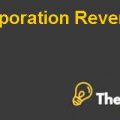
Comparable Companies Analysis
The second method used for the valuation of Saxon Financials was the publicly traded comparable companies’ analysis. In this approach, we compare the data of our company with the average of those companies who are our competitors and trade in the same industry having same attitudes.
In this case, the data of some companies were given, but only few were related and directly comparable with Saxon Financials because of their sizes and business functions.
In the case of share prices, Saxon Financials was better even after the decline in its share prices in the recent years. In the case of Enterprise value and estimated Price Earnings ratio (P/E ratio), Saxon Financials was below and that gave it a worth of $9.95 per share below the industry average of $11.56 per share.
Comparable Precedent Transaction Analysis
In this method, we compare the same scenario comparable transactions previously taken place. For this purpose, we estimated a price which was near to the industry average of price over asset under management. We assumed the per share price of $84.13 of Saxon Financials shares.
Various Price Premiums
In another valuation method, we were given the scenarios of different premiums over the current stock price of Saxon Financials. The current prevailing price of the Saxon Financials was approximately around $12.7 per share. First premium was off 20% over the prevailing share price, which ended up with a per share price tag of $15.24.
The second premium assumed was 30% current market price of a share of Saxon Financials which gave the price of around $16.51 per outstanding share. The third premium assumed was 40% current market price of a share of Saxon Financials which gave the price of around $17.78 per outstanding share
Third premium assumed was 50% current market price of a share of Saxon Financials which gave the price of around $19.05 per outstanding share. The last premium was assumed to be 60% current market price of a share of Saxon Financials which gave the price of around $20.32 per outstanding share.
Accretion / Dilution Analysis
The last method for the valuation of Saxon Financials was accretion or dilution in the EPS of the company. In this method, there were two different scenarios of all stock and all cash deals with the $15 option.
In all stock deal, we valued the company in the year 2009, assuming that all the calculations will remain the same as of discounted cash flows. However, after the computation of the net income, we multiplied the value of $15 with that of the total number of outstanding shares in Saxon Financials.
Then we divided that amount to the current prevailing share price of IGM, which was $43.60 in order to arrive at the number of shares to be issued for the merger purposes.
IGM was expecting $3.49 as an EPS in the year 2009 and they had 265.75 million outstanding shares, which was then multiplied by the expected EPS amount to arrive at the expected Net Income for that year.
Then the income of both the companies was summed up and divided by the total number of shares (i.e. Current outstanding shares and shares to be issued by IGM to acquire Saxon Financials) in order to end up with the new expected EPS, which was higher by $0.02 per share as compared to the original estimation, hence, an accretion in the earnings per share.
In all the deals made by cash, were financed by the 8% interest debt, which ended up with a decreasing value of earnings after tax even after the absorption of the tax benefits. After following the same pattern as disclosed above, we have arrived at the new expected EPS of $3.47, which was lower by $0.02 as compared to the original expectations of EPS, hence, dilution in the EPS.
Recommendation
After conducting the computation based on best of our knowledge and beliefs and based on information given in the case, we have arrived at the point that the acquisition will be beneficial for both the companies, as they were expecting the growth in their business and needed to expand the business.
We assumed the price tag limit of $18 to $23 because of the declining trend in the share prices of Saxon Financials. The current prevailing share price in the market was around $12.70, so the premium of around 40 to 80 percent would be ideal for the shareholders of Saxon Financials. On the other hand, we proposed that the deal should be made as an all-stock deal, since IGM was expecting to raise its original expecting EPS..............................
This is just a sample partial case solution. Please place the order on the website to order your own originally done case solution.













